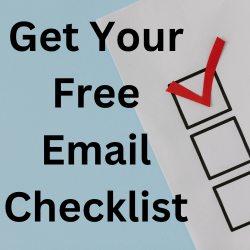Defining Your B2B Target Market: A Comprehensive Guide
Welcome to our series on defining your B2B target market. In this deep dive, we’ll explore how to effectively define and segment your target market to maximize your business potential. Whether you’re new to this or looking for advanced insights, this guide aims to provide valuable strategies and ideas.
What is a Target Market?
A target market comprises the firms or customers you aim to sell your product or service to. It’s essential to narrow this down more than you might initially think. For example, if your business operates in the southern United States, don’t include states like California or Oregon unless you actually sell there.
Why is Understanding Your Target Market Important?
Understanding your target market is crucial because it allows you to:
- Know your customers’ needs.
- Offer solutions that align with their problems.
- Identify decision-makers and pain points.
Without this understanding, you risk misaligning your products and marketing efforts, leading to poor business outcomes.
Steps to Define and Segment Your Target Market
- Customer Segmentation
- Begin by segmenting your market into manageable groups.
- Define segments based on various criteria such as industry, company size, or geographic location.
- Creating Buyer Personas
- Develop detailed buyer personas or firm personas.
- A persona includes demographic information, business needs, pain points, and decision-making processes.
- For instance, a logistics company like DHL targets businesses with specific shipping needs.
- Analyzing Data
- Use a combination of direct interviews, focus groups, and analytics to gather data.
- Understand both qualitative and quantitative aspects of your target market.
Finding the Balance
While segmenting your market, avoid going too narrow or too broad. You need to strike a balance to ensure you’re targeting a specific group while still keeping enough potential customers to sustain your business.
Practical Example
Consider DHL, a B2B shipping company. By looking at their website, you can tell they target businesses. They cater to a broad range but with specializations that match their capabilities. Similarly, if you’re a law firm specializing in intellectual property, you might target tech companies or startups with significant R&D investments.
Conclusion
Defining and segmenting your target market is a dynamic process that requires continuous refinement. By understanding who your customers are and what they need, you can create more effective marketing strategies and business solutions. Stay tuned for the next video in this series, where we’ll delve deeper into these concepts.
Stay Tuned
In the following videos, we will explore each step in detail, providing you with actionable insights and advanced techniques to refine your target market further. By the end of this series, you’ll be equipped with the knowledge to effectively define, segment, and leverage your target market to drive your business success.
By following this guide and applying the strategies discussed, you’ll be well on your way to mastering your B2B target market, ensuring your business growth and customer satisfaction.
Book Recommendation
The 1-Page Marketing Plan: Get new customers, make more money, and stand out from the crowd. This book helps those with limited resources build a concise and helpful marketing plan, including work on your target market.


